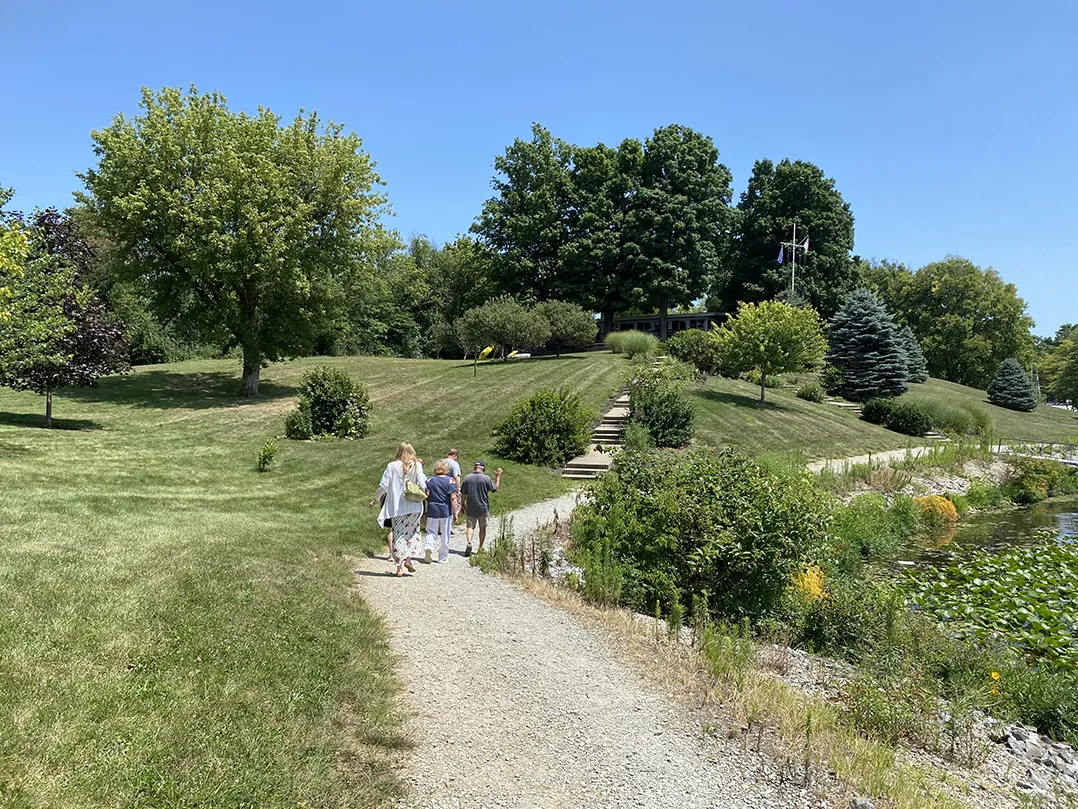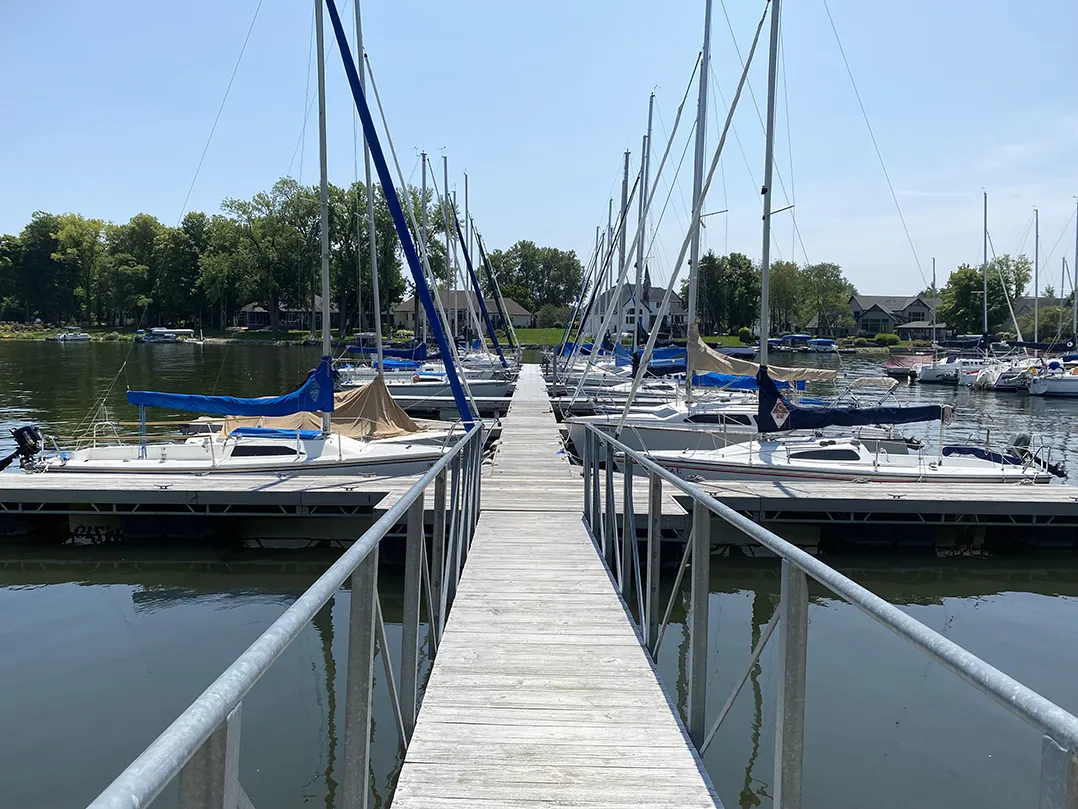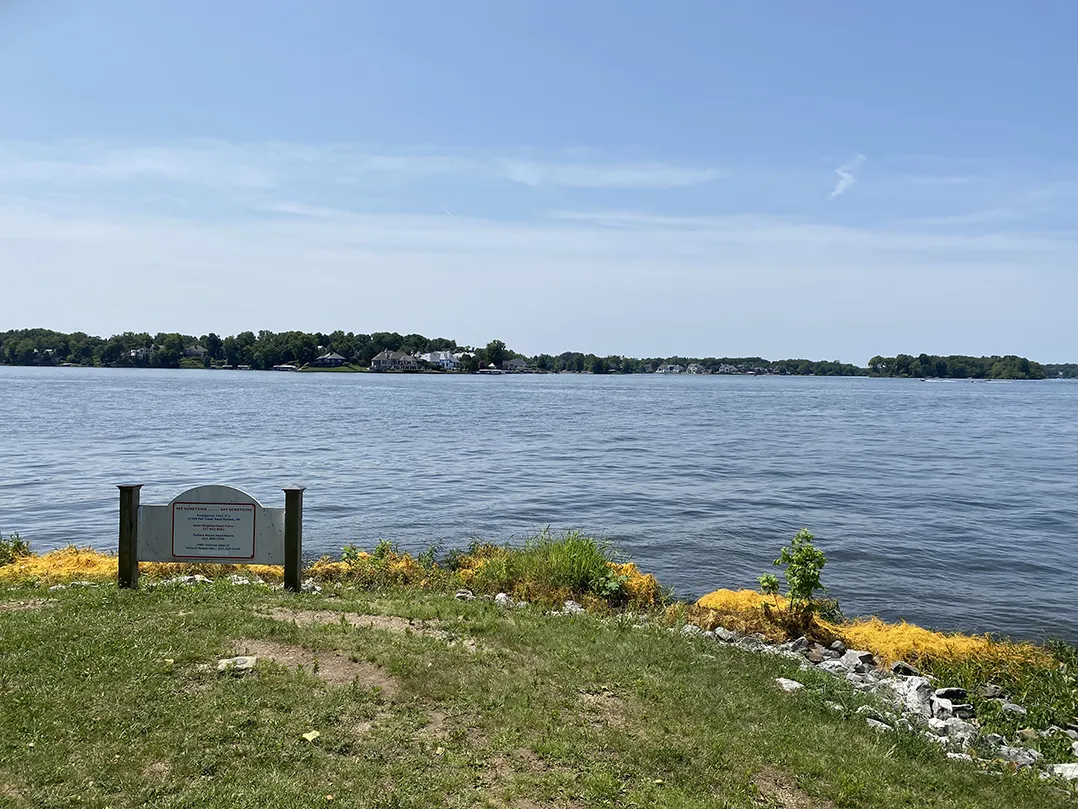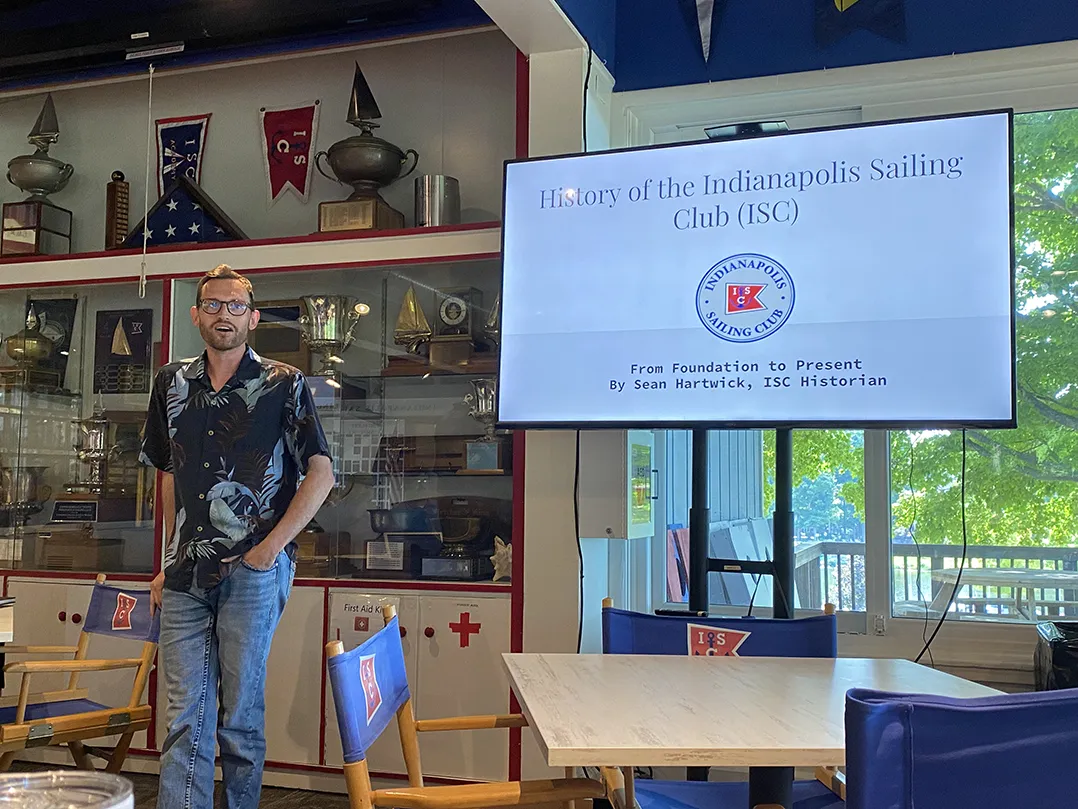For nearly 70 years, Indianapolis Sailing Club members have been boating on Geist Reservoir. The organization has grown from about 70 members when it was founded in February 1955 to about 330 today; and from leasing its 13-acre headquarters at Geist to owning it outright.
The club recently hosted a presentation at its clubhouse, 11325 Fall Creek Rd., about the histories of Geist Reservoir and the sailing club, giving an inside look at the private organization.
ISC historian Sean Hartwick said he moved back to Indiana from California a few years ago and, even though he previously lived in a coastal state, he never sailed until he returned to the Midwest.
“This has been a fantastic place for me to find,” he said of Geist. “I … live in Fishers here. It’s a short drive for me and it’s a beautiful place for me and my fiancée and friends to come, and we also get to enjoy the activity of sailing.”
ISC offers social opportunities for members on and off the water, Hartwick said. It hosts races spring through fall on Wednesday evenings starting at 7 p.m. and Sunday afternoons starting at 1 p.m. There is a group specifically for women, dinners and cookouts for all members and their guests and — if it gets cold enough in the winter — ice sailing.
Hartwick said the club is actually two nonprofits. The original club is a 501 (c)7, which is a nonprofit that provides recreational and social opportunities for its members. The second is the club’s sailing academy, which is a 501 (c)3 — a nonprofit that offers services to the community.
ISC Director Andrea Townsend oversees the academy and said they start training kids as young as 4 years old.
“We have a start-out sailing program for 4- to 7-year-olds, where they go with their parents. That feeds into our summer camp for 8- to 14-year-olds,” she said. “Then within the camp, they graduate to be junior counselors and then lead counselors. Then a lot of those lead counselors are coming back and are paid staff for adult training. It’s incredible how many people come together to make this a very exciting and growing place to be.”
Hartwick said the club was founded in the 1950s by a group of friends — referred to in a news article at the time as “six sad sailors” — who wanted to sail in their hometown. For years after Geist Reservoir was built, it was off-limits to recreational activity, but Indianapolis Water Co. reconsidered that restriction when the Indiana Department of Natural Resources threatened to take over the area and turn it into a state park.
Hartwick said then-president of the water company Howard Morse was friends with one of the “six sad sailors,” Jack Messmer — the club’s first commodore.
“Because they were friends, buddies at the time, Jack was able to kind of convince Morse to allow sailboats to be in the water,” Hartwick said.
The club also negotiated a free lease with the water company for a 13-acre site next to the reservoir. ISC eventually did have to start paying rent until it purchased the land in the early 1980s.
Jim Jordan, ISC’s public relations committee chair, led a small group on a tour of the club’s grounds. The clubhouse sits on a hill overlooking the lake, with a sloped path leading down through carefully tended beds of native plants toward docks where hundreds of boats are tied up.
Jordan said he’s sailed since the 1970s, but never raced until he joined the club.
“I realized what I was missing all through the years, because it’s really a lot of fun,” he said. “It’s a lot of fun and there’s a lot of strategy involved.”
Part of that strategy — especially for the smaller boats — is how to react when they capsize.
“It’s not unusual if the wind is strong for one of them to capsize during a race and the crews know how to right them — so they self-rescue, basically,” he said. “In fact, during a regatta, they’re not allowed to receive help from outside their boat. If they do, it disqualifies them from the race. So, a lot of the crews will jump out of the boat, flip it back up, bail it out and continue racing.”
As Jordan pointed out boats used for training, a family of swans paddled away from the tour group. Further along, ducks waddled toward the water. Jordan said the club tries to maintain a natural habitat on its grounds to benefit animals.
“There’s great fishing and you don’t need a $50,000 bass boat to catch them,” he said. “You can just fish right off the dock. There’s also a lot of other wildlife out here, like muskrats, turtles. We see a lot of turtles out here.”
Jordan said that in addition to training camps throughout the summer, ISC lets Scout groups camp under the trees on the grassy peninsula that juts out into the reservoir.
“They like it because it’s kind of quiet out here,” he said. “There’s not a lot of people and, particularly in the evening, it gets real quiet.”
For more, visit indianapolissailing.org
The old oak tree
Indianapolis Sailing Club Director Andrea Townsend said the club values its history, but part of that history was lost last year. A large oak tree on the grounds finally succumbed to a lightning strike that happened about 15 years ago.
Townsend said the tree was a common meeting spot for members. While the tree is now gone, it will not be forgotten and a new pavilion has been built in its place.
“I think it was probably six feet around,” she said of the tree. “This was a giant oak tree and we lost it last fall, but we got our new shelter built in less than six months. We’re very proud of it and it’s already become a new gathering spot.”







